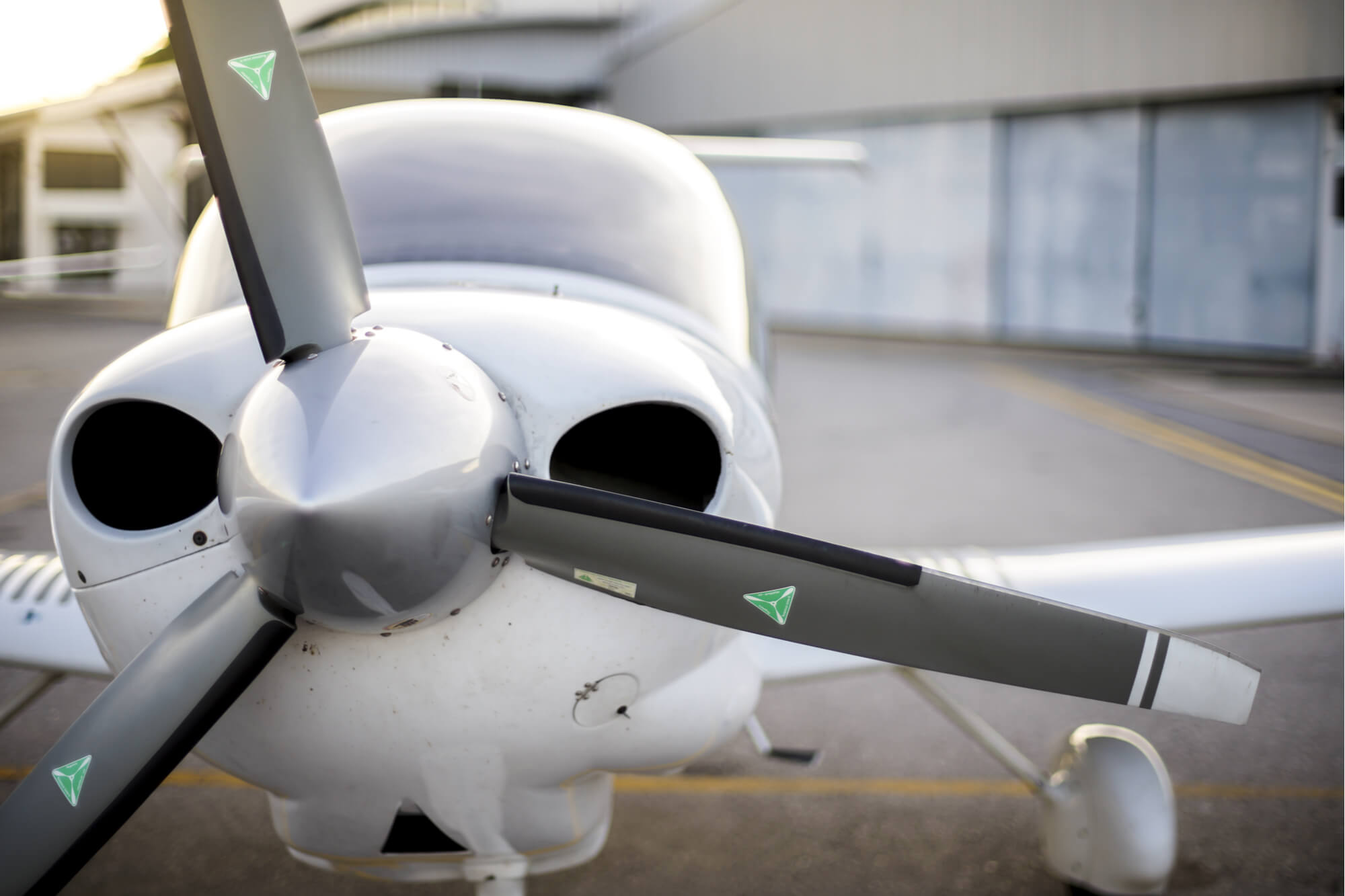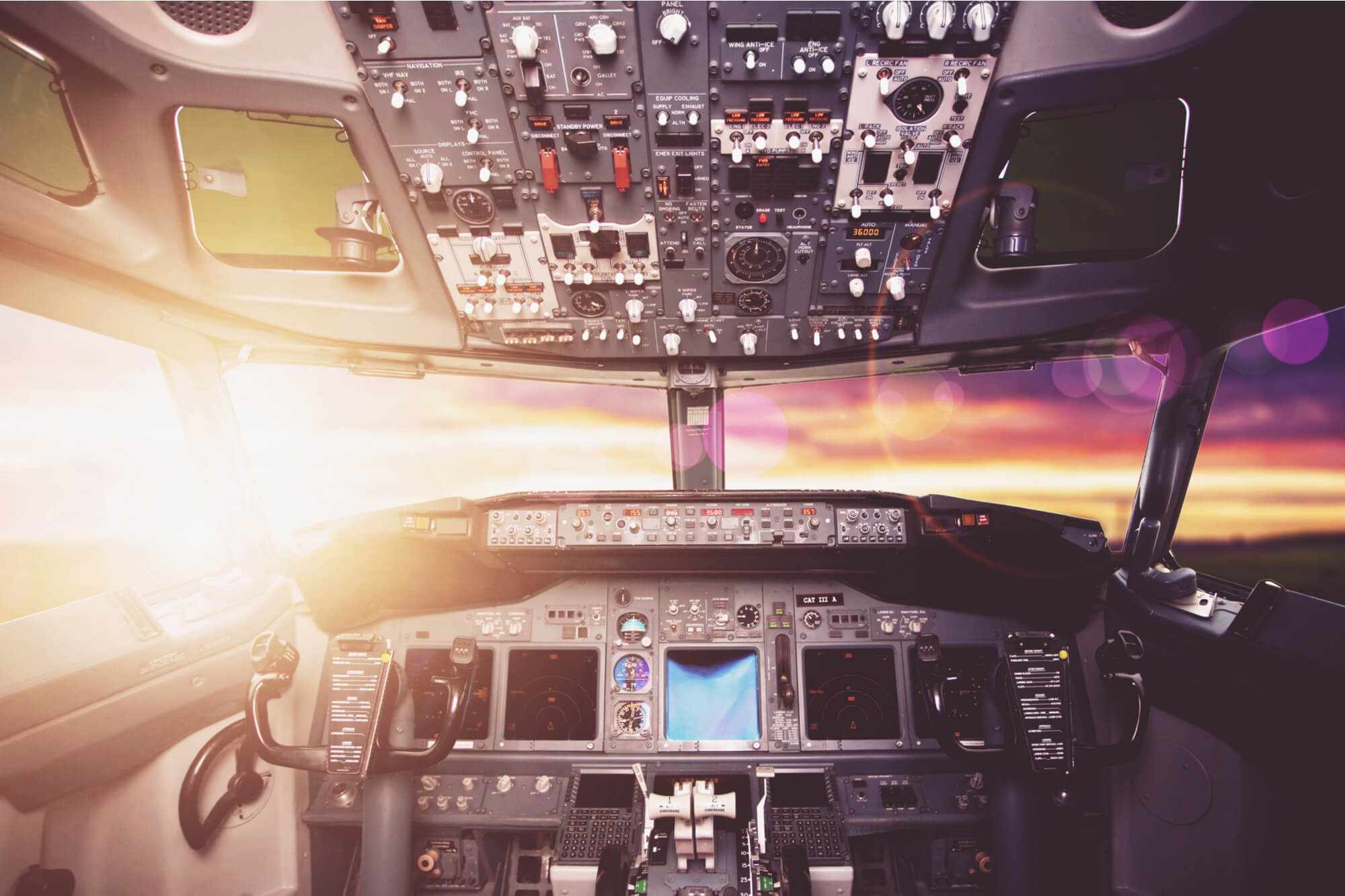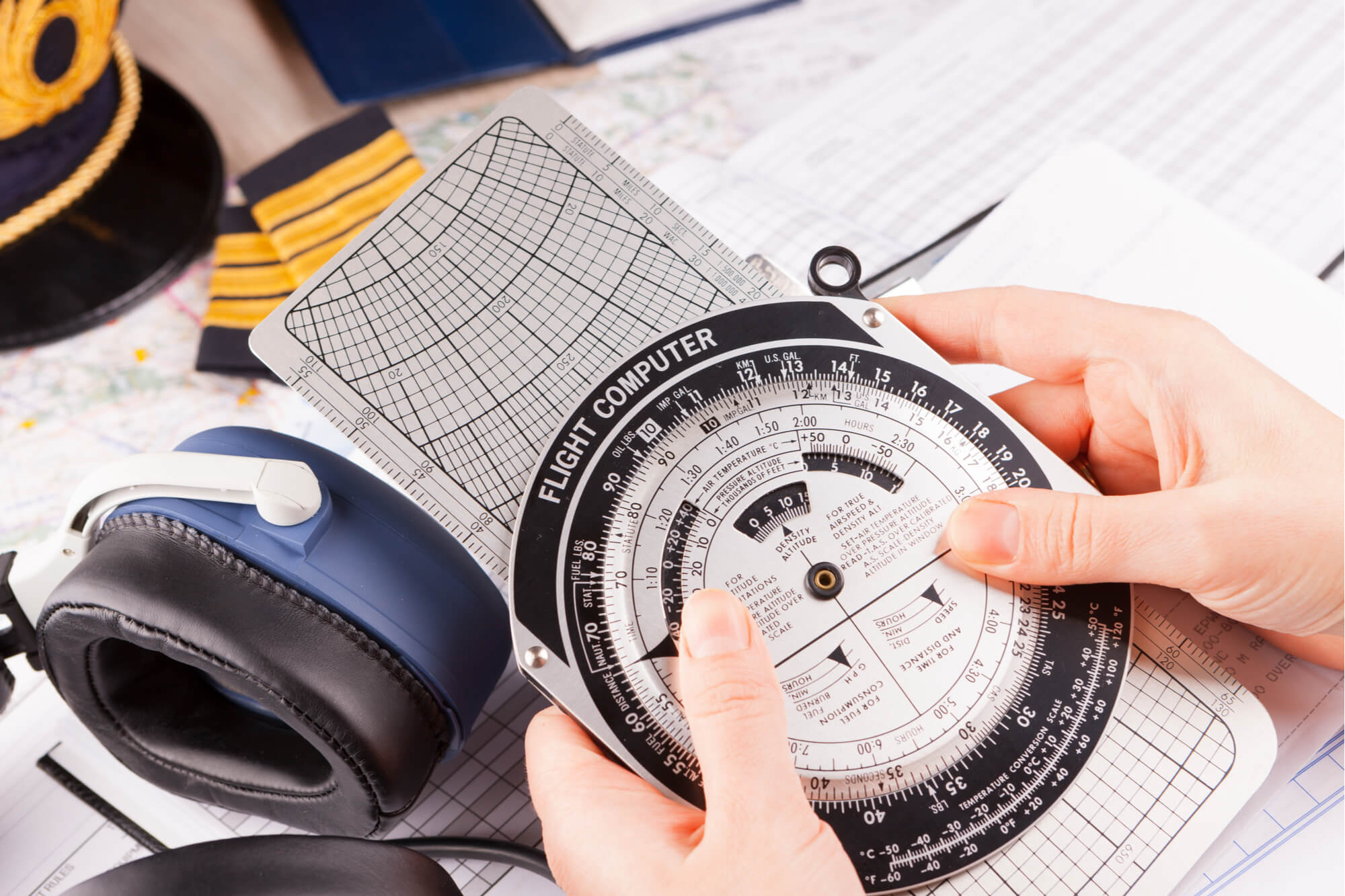April 26 marks International Pilots’ Day. It’s been a rough couple of years for the profession, with the COVID-19 pandemic hitting the aviation industry hard. But now recovery is in sight and with talk of pilot shortages in certain regions, there’s bound to be people wondering how to become an airline pilot.
One of the first things you should probably do is make sure that you can meet the medical requirements – a Class 2 medical is sufficient for private flying but to become a commercial pilot, you’ll need a more rigorous Class 1 medical. A common misconception is that you need perfect vision. You can become a commercial pilot if you wear glasses but there are some restrictions and limitations.
You’ll also want to determine whether flying a small aircraft is for you! Everybody learns how to fly first in small single engine planes, some with only two seats before graduating to bigger aircraft. It’s very different being in a single engine aircraft to being a passenger in a large jet and some people do find they suffer from motion sickness. Most local flight schools will offer ‘discovery’ flights or ‘Be a pilot for a day’ experiences so you can try out the controls.
Ricki Foster, a cadet from the United Aviate Academy in Goodyear, Arizona, took a discovery flight when she was working as a flight attendant.
“I absolutely fell in love,” she tells AeroTime. “I really enjoyed being a flight attendant. I loved aviation then, but I just didn’t realize that my true love would have been actually flying the aircraft. So get a discovery flight, check it out, see if your curiosity meets your passion. You might find out it’s not for you, or if you’re like me, you might fall in love the first moment you pull back the yoke.”
Once you’ve had a trial run, there’s several different ways to gain the licenses that you need to start looking for work as a commercial pilot. They all have their advantages and disadvantages and what is best for one person may not be suitable for another. In addition, you need to remember that getting a license is no guarantee of employment and airlines will be looking for other skills too, including communication, teamwork and decision-making.
“The number one piece of advice is to recognise that the right route is the right route for the individual, not the right route that somebody has told them,” advises Ben from Airline Prep, which specializes in airline assessments for current and future pilots.
As with everything in life, there are no guarantees and, as the pandemic has shown, the aviation industry is particularly sensitive to crises. Aviation is a cyclical industry – a few years of growth are often followed by a downturn, which can lead to airlines shrinking and making crews redundant.
One thing pilots will often advise, and which has proven especially true over the last couple of years, is that it’s important to do your research, stay realistic and always make sure you have a back-up plan!
“You should always have another option,” agrees Airline Prep’s Ben. “Don’t put all your eggs in the flying basket, have something else that interests you or that you’re capable of.”
So, what are the common options?
Photo credit: Naris Vachiranantavat / Shutterstock.com
There are three main ways to get a commercial pilot’s license – modular, integrated or on a multi-crew MPL scheme.
Modular allows a person to train at their own pace, starting with a private pilot license (PPL), then building up hours and taking the ATPL theory exams before obtaining a commercial pilot license (CPL) and Instrument Rating (IR).
Benefits are that it can be done at your own pace and while still maintaining a job. However, you need to be very self-motivated and trying to study for the exams can be harder without the benefit of classmates. Modular is typically the cheapest route to the flight deck but will still set you back tens of thousands of dollars.
The integrated option involves doing a full-time course at a flight school. Integrated courses allow cadets to reach the CPL stage with fewer hours than required on the modular route. This is often the quickest way but is more expensive than modular. Course costs can reach up to $130,000. Doing an integrated course also means you can’t work while you train, meaning you usually have no income while on this route.
The third option, which has only been around since 2006, is to go down the multi-crew pilot license (MPL) route. Cadets on MPL schemes are tied to an airline right from the start, spending less time in light aircraft and more time in jet simulators to get them more used to the multi-crew environment and that airline’s operating procedures. While it can be a fast way to the right-hand seat, it is also expensive at $145,000 and if the airline that you are training for goes bust, or decides it no longer needs pilots, as happened during the COVID-19 pandemic, the license is not easily transferable.
“It’s important to bear that in mind that all of the routes are valid, but you have to know what it is you’re letting yourself in for,” Ben from Airline Prep tells AeroTime. “There’s never a guarantee of a job with any route. Always take airline relationships with a pinch of salt, because airlines can change what they require,” he advises. “So there’s no route whereby you’re more likely to get a job.”
These are all self-funded options. While there are some airline sponsored schemes out there, they are few and far between. Maximilian Buerger from pilot training advisory firm AFM.Aero previously told AeroTime he expects airlines may start to finance more cadet programs in 2023.
However, there are some scholarships and bursaries available, which can help with some costs, so do check out your local flying schools. Airline Prep, which provides CV help, interview training and courses to prepare for airline assessment, also offered a bursary this year.
How to get the first job?
Credit: StudioSmart / Shutterstock.com
Making it through training and receiving your license also does not guarantee getting a seat up front, cautions Airline Prep’s Ben, himself a pilot. “That license is only your ticket to employment, not your right to it. It’s important to bear in mind that just because you have a license, it doesn’t make you employable.”
Airlines look for nine core competencies when assessing if candidates are suitable for flight crew roles – situational awareness, leadership and teamwork, communication, workload management, problem solving and decision making, flight path management – automation and manual, knowledge of procedures and application of procedures.
Captain Andy O’Shea was involved with pilot training at European low-cost carrier Ryanair for 28 years, managing the training of over 10,000 low-hours pilots. He has now set up The Airline Pilot Club, which provides a range of tools, advice and online courses to screen and prepare future airline pilots.
During O’Shea’s time at Ryanair, the airline grew from 25 aircraft to over 460 Boeing 737 jets, becoming the largest airline by passenger numbers in Europe. However, he noticed a problem. To maintain the company’s pipeline for around 600-800 pilots per year to start 737 type rating courses, Ryanair was having to assess 1,200-1,600 licensed pilots in the simulator.
“The implication of this is that 50% of licensed pilots in Europe were unable to pass an interview and simulator assessment,” O’Shea explains. “They couldn’t find their way around a hold or communicate with the person next to them. It was burnt into my psyche, this realization that the pilot training industry was extremely deficient in what it was doing, because it wasn’t producing airline-ready pilots.”
It was then that O’Shea got involved in setting up the APS MCC (Airline Pilot Standard Multi-Crew Cooperation) course. The course is done after CPL and IR training, and involves 40 hours in a simulator, double the time of the older MCC, with a focus on the core competencies.
“The news is great,” says O’Shea. “We’re seeing 100% pass rates on the mentored APS MCC. We now have a situation where if an airline engages with a high quality ATO and puts together an APS MCC you can produce outstanding students.”
It’s not just on a training scheme that you develop those core skills, of course. Airline Prep’s Ben says he developed a lot of skills while working at MacDonald’s when he was younger.
“Unbeknown to me at the time, that’s where I developed all my airline competencies because I’m working within a team, I’m learning about communication, I’m managing a team, I’ve got to be situationally aware, I’ve got to think ahead. I’ve got to make decisions.” he explains.
Time to start training?
Credit: Monika Wisniewska / Shutterstock.com
While certain flight schools and airlines are urging prospective cadets to apply for training schemes now, others in the industry are more cautious.
Back in November 2020, British pilots’ association BALPA advised people to delay or pause training, saying that hiring would not occur for two years. The union updated its position in a statement to prospective pilots on April 7, 2022.
“As the experience of the last 24 months has proved, aviation is an incredibly volatile and hard to predict industry,” the union wrote. “Remaining flexible to changes in the pilot supply needs is key to ensuring that your investment in your flight training is not wasted. We therefore recommend that trainees choose a training route that allows them to adapt their training timeline to the recruitment needs of the industry and allows the trainee as much financial flexibility as possible, by avoiding paying large lump sums of money upfront.”
Andy O’Shea also hopes The Airline Pilot Club will help prevent situations where aspiring pilots hand over money to flight schools when they aren’t really suited for the profession and have no chance of getting a job.
“We’re very focused on attracting the right people into the industry and giving them every possible preparation,” he explains. “There are people who have had a horrible experience getting separated from a whole bunch of cash, becoming very unhappy and then not getting a job.”
The website, which will be re-launched in May, will offer free online psychometric testing to see if wannabe pilots have the right characteristics, as well as provide free e-learning courses covering the core competencies, plus advice on which airline training organization (ATO) to consider. With thorough screening of candidates and ATOs done at such an early stage, O’Shea hopes the Airline Pilot Club will also be able to help provide cadets with unsecured loan options, helping to open up pilot careers to more candidates, rather than only those with healthy bank accounts.
“In any journey, it’s really helpful if you know where you’re starting from. You learn about the career and learn about yourself. It will help you get to the right ATO and give you a really good chance of having a good experience,” O’Shea says.
We hope this article has given you some insight into what to consider if you’re thinking about becoming a pilot. Let us know in the comments if this article has provided you with some useful advice.




